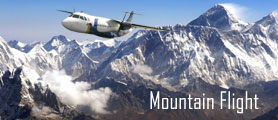About Bhutan
Bhutan's is the Paradise country cover with full of natural beauties and different culture and festivals. The first thing that a visitor to Bhutan will notice is the great expanse of green, forested hillsides. A drive or trek through the countryside of Bhutan will take you from the subtropical forests over high alpine passes and down to broad valleys with colorfully painted houses scattered across the landscape. Bhutan have also flora like rhododendrons, junipers and magnolias several meters high, carnivorous plants, rare orchids, blue poppy (national flower), edelweiss, gentian, medicinal plants, Daphne, giant rhubarb, high-altitude plants, tropical tress, pine and oak etc.
And other Fauns as Golden Languor, Red Pandas, Black-necked Crane, Snow Leopard, Taken, Musk Deer, Himalayan Brown Bear, Himalayan Marten, Tiger, hornbills, pheasants, mountain goats and timid blue she It has it’s own history steeped in Buddhist tradition and mythology. Bhutan's medieval and modern history was a time of warlords, feuds, giant fortresses and castles. The visit of Padama Sambhava in 747 AD is the important landmark in the history of the country. The kingdom's recent history begins with a hereditary monarchy, which was in the 20th century and continued the country's policy of isolationism. It was under the leadership of the third king that Bhutan emerged from its medieval past of serfdom and reclusion. In the present Bhutan has maintained a policy of careful, controlled policy of development in order to preserve its national identity. In other Words, Bhutan is know is as Druk Yul, 'land of the thunder dragon'. The people are known as the Drukpas.
CULTURE AND RELIGIOUS: The people of the Bhutan they follow the Buddism. Buddhist faith has played and continues to play a fundamental role in the cultural, ethical and sociological development of Bhutan and its people. It permeates all strands of secular life.
PEOPLE: The People of this country are mongolin. They are a mongolid race of people who originally migrated into and settled the country in the 7th Century AD. There are three main ethnic groups - the Ngalongs in the western and central regions are the descendants of Tibetan immigrants who arrived in Bhutan from the 9th century. The Sharchops who live in the east of the country are recognized as the original inhabitants of Bhutan. The third group is known as Lhotshampas. They represent the Nepali speaking ethnic group. The total population of Bhutan is about 600,000.
FESTIVALS: There are many religious festivals. The best-known festivals are the Tsechus, which are held at different times of the year in different locations. Tsechus are celebrated for three to five days with both monks and laymen taking part in the ritual mask dances.
DZONGS: These massive fortress-monasteries decorate most hilltops and valleys. They serve as the administrative headquarters and are the focus of secular and religious authority in each district.
TREKKING: There are numerous routes ranging from low (9840 ft) to medium (10,000 ft) to very high altitude (14,400 ft) treks. Rainbow Tours a Trek and Sakten Tours and Treks can organize dozens of different programs including Eco-Trekking, an Orchid Trek, Medicinal Plant Treks, Bird-Watching Treks and a Yeti trek and Tour Itineraries.

